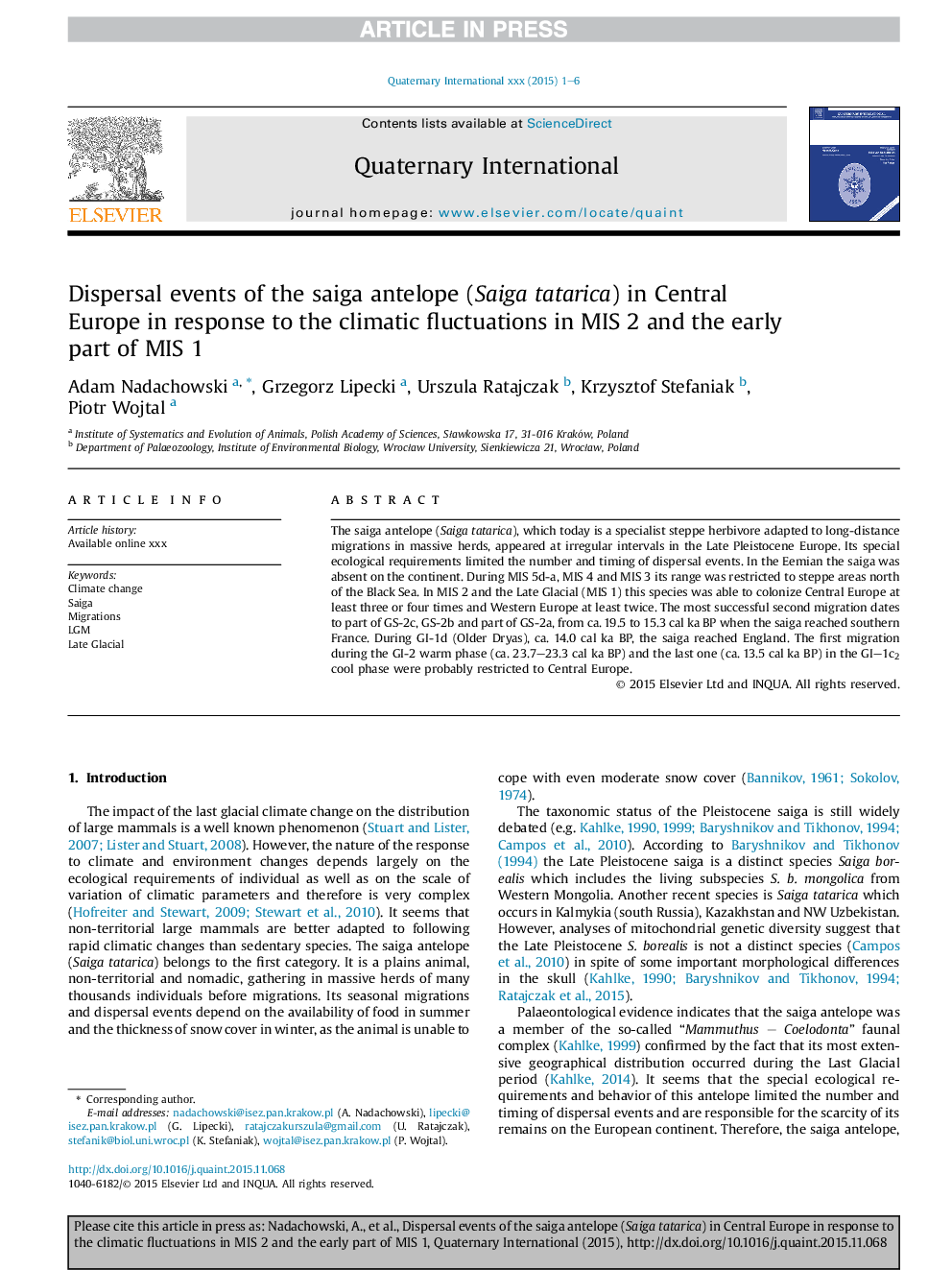| Article ID | Journal | Published Year | Pages | File Type |
|---|---|---|---|---|
| 5113976 | Quaternary International | 2016 | 6 Pages |
Abstract
The saiga antelope (Saiga tatarica), which today is a specialist steppe herbivore adapted to long-distance migrations in massive herds, appeared at irregular intervals in the Late Pleistocene Europe. Its special ecological requirements limited the number and timing of dispersal events. In the Eemian the saiga was absent on the continent. During MIS 5d-a, MIS 4 and MIS 3 its range was restricted to steppe areas north of the Black Sea. In MIS 2 and the Late Glacial (MIS 1) this species was able to colonize Central Europe at least three or four times and Western Europe at least twice. The most successful second migration dates to part of GS-2c, GS-2b and part of GS-2a, from ca. 19.5 to 15.3 cal ka BP when the saiga reached southern France. During GI-1d (Older Dryas), ca. 14.0 cal ka BP, the saiga reached England. The first migration during the GI-2 warm phase (ca. 23.7-23.3 cal ka BP) and the last one (ca. 13.5 cal ka BP) in the GI-1c2 cool phase were probably restricted to Central Europe.
Related Topics
Physical Sciences and Engineering
Earth and Planetary Sciences
Geology
Authors
Adam Nadachowski, Grzegorz Lipecki, Urszula Ratajczak, Krzysztof Stefaniak, Piotr Wojtal,
